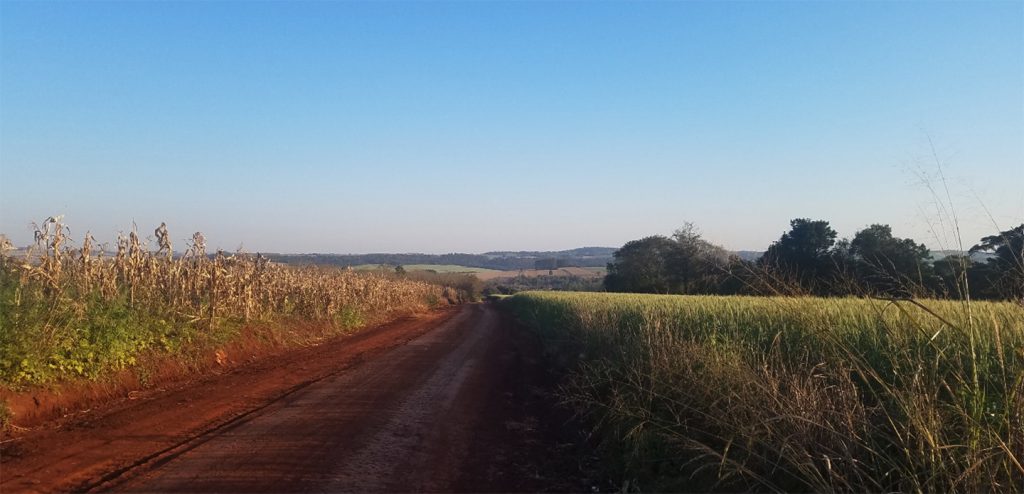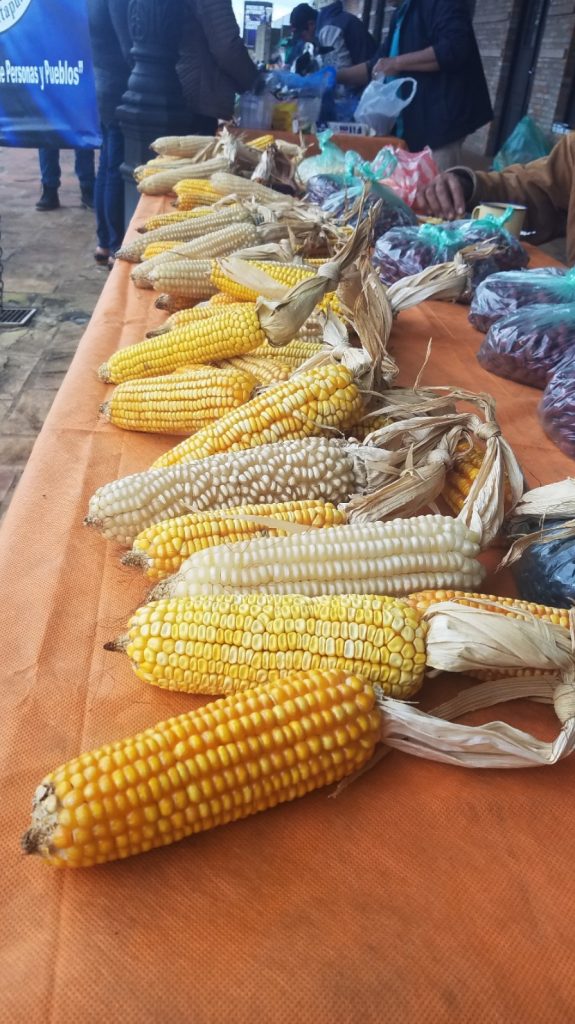Jamie Gagliano 2019 Field Report
Jamie Gagliano, Masters Student, Geography, Syracuse University
Project: Agroecology Feminisms: Paraguay’s Conamuri in a sea of soy
Paraguay has been shaped by a global agricultural system that rearranges land access regimes to favor large corporations. Since soy’s introduction in the 1980s, Paraguay has become the fourth largest exporter of soy in the world, outpaced only by Brazil, Argentina, and the USA (World Bank Group, 2018). Rural people reliant on subsistence agriculture are being dispossessed as soy monoculture increasingly dominates the Paraguayan landscape. As a result, many rural peasants (campesinos) are organizing in their communities in order to protect rural livelihoods, even as many elect to migrate into urban areas in search of remunerated work. As the ability to sustain rural livelihoods declines and few rural wage labor opportunities emerge, people move to urban centers in search of work, nevertheless.

The growth of soy production is contested by multiple social movements, including Conamuri. A women’s peasant and indigenous social movement, Conamuri envisions agroecology as an alternative model of rural development that will protect campesino livelihoods and improve the situation of women in Paraguay. The movement is especially active in areas of rapid soy expansion, such as the departments Caaguazú and Itapúa. The ongoing situation in Paraguay presents a paradox for Conamuri: As the recent expansion of soy in the area renders its agenda more pertinent, this very same process drives many young adults into urban centers. It becomes harder for Conamuri to advance its vision as the rural population declines.
The objective of my research is to understand how Conamuri is reproduced in this context.My research asks the following questions:(1) how do the long-term effects of dispossession shape the possibilities of alternatives to soy development?; (2) how does rural-urban migration effect Conamuri organizing, and what strategies do they use to deal with migration?; (3) do these strategies effect how young adults in urban centers do or do not participate in Conamuri?

My research followed two of Conamuri’s major ongoing projects: their seed exchange house in Caaguazú and their agroecological yerba mate production facility, called Onoiru, in Itapúa. These two departments represent two distinct levels of soy production. Caaguazú is on the frontlines of contemporary soy expansion, whereas Itapúa has been a major soy producer for thirty years.
My research began with a few weeks in Asuncion, Paraguay’s capital, where I took Guarani language courses, conducted interviews with Paraguayan scholars and human rights NGOs, and performed archival work in Conamuri’s offices. I then traveled to Caaguazú and Itapúa where I conducted 30 interviews with individuals involved in Conamuri projects. My interviews were supplemented by participant observation as these projects operate in daily life. I also attended a day-long workshop meeting in Asunción with Oxfam-Paraguay for Onoiru, and through invitation, I attended three Conamuri seed fairs, including two district-level seed fairs, and the national seed fair.
This summer’s fieldwork would not have been possible without the support of the CLAG Field Study Award. These funds supported my ability to travel to Paraguay, my housing and food costs during the three months, and ground travel. In addition, these funds helped pay for an intensive Guarani course to facilitate communication across various communities. This research was also supported by the Syracuse University Geography Department, Roscoe Martin Award from the Maxwell School at Syracuse University, and the PLACA Award from the Moynihan Institute at Syracuse University.
See the full report for more details.


















